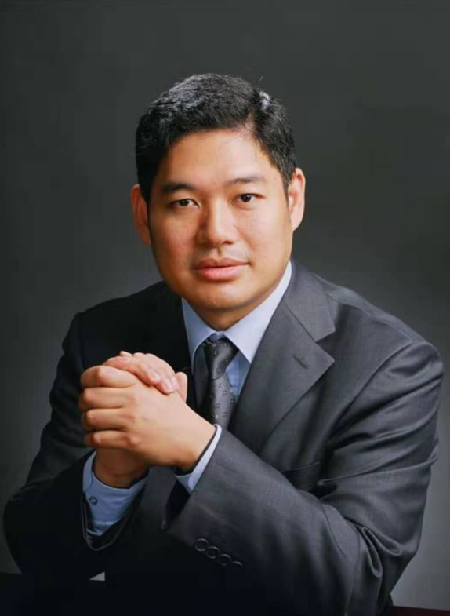Professor Liu Jieqiong: Karelizab+Apatinib+Eliprin Sanlian Plan Create a new height in advanced TNBC backline
Author:Cancer Channel of the Medical Time:2022.06.22
*For medical professionals for reading reference

Corruszumab+Apatinib+Eliprin has a significant effect. It is expected to become a new choice for back -line treatment of patients with advanced TNBC.
Three -negative breast cancer (TNBC) has a high degree of malignancy and poor prognosis. At present, the first TNBC first-line treatment is still mainly chemotherapy, although previously, such as the IMPASSION 130 research and the Keynote-355 study revealing the important value of immunochemical combined chemotherapy in advanced TNBC first-line therapy [1]. However, for patients with advanced TNBC patients who have progressed after first -line chemotherapy or immunotherapy, their treatment options are limited. In May 2022, "Nature Communications" IF 14.919 magazine officially published a multi -center, single arm, forward -looking, forward -looking, forward -looking, forward -looking, forward -looking, and forward -looking at the Dean of Sun Yaxian Memorial Hospital of Sun Yat -sen University and Sun Yixian Memorial Hospital of Sun Yat -sen University. Sexual, phase II clinical research [2], the results of Karelizab+Apatinib+Eliprin used for the failure of multi -line therapy, which has a significant benefit. The objective relief rate (ORR) is 37.0%, the disease control rate (DCR) is 87.0%, and the median without progress (PFS) is 8.1 months. It is expected to become a new choice for advanced TNBC backline. Based on this background, the medical circles of the medical profession specially invited Professor Liu Jieqiong to express his insights on the relevant issues of the study.
The existing joint plan based on immunotherapy is not good for advanced TNBC backline treatment, and new treatment solutions need to be explored
I. Late TNBC backline treatment still has large and unsatisfactory treatment needs
Professor Liu Jieqiong emphasized that for patients with PD-L1 positive TNBC, the current guidelines [3] are mainly recommended for immunochemical combined chemotherapy, and research and exploration based on immunotherapy in the back line is not ideal. For example, Keynote-119 Study [4] found that although the duration of the relief time of Paborizer's single anti-single drug treatment is longer than chemotherapy, its single drug treatment is in patients with CPS ≥20, ORR (26.3%) and median PFS ( 3.4 months) has not been improved. The failure of the immune single drug also further reminds that the importance of immune combined therapy for improving TNBC disease control. However, in ENHANCE 1 Study [5], Paborizumab+Ailblin, as a advanced TNBC second -line/third -line treatment plan, still failed to hand over a satisfactory answer sheet. %), Mid -position PFS (4.1 months) still needs to be further improved.
Although single drugs or dual drug chemotherapy and SACITUZUMAB GOVITECAN (SG, Trop-2 targeted antibody drugs) are currently recommended for the second or second-tier treatment options for patients with late TNBC patients. However, the extent of the ORR of the single drug chemotherapy is 5%-26.6%, the dietary chemotherapy is 22.2%-31.6%, and the SG is 31.0%, and the median PFS range of these drug treatment is 1.7 to 5.6 months [2]. In general, there are currently large and unsatisfactory treatment needs for advanced TNBC backline.
2. Carrilizumab+Apatinib+Eliprin has a coordinated mechanism, and the joint application is worth further exploring
In the past, the basic study of Professor Liu Jieqiong's team published in "Clinical Cancer Research" showed that in multiple mouse models, low -dose antiovascular production therapy can be normalized, increased CD8+ T cells and B cells, and immune cells. The expression of PD-1 to increase the efficacy of PD-1 inhibitor treatment [6]. The synergistic role of antibody-generating drugs and immune examination points inhibitors, a Karleyzumab (PD-1 inhibitor)+Apatinib (vascular endothelial growth factor suffering Body 2 [VEGFR2] Tyrtin Anticidase inhibitor) Treatment of advanced TNBC's phase II clinical study [7] has been well verified. For patients who have received no more than 2 thread chemotherapy during the stage of advanced diseases, this combination The ORR of the scheme is as high as 43.3%, but the mid -bit PFS is still not ideal (3.7 months). Therefore, the joint plan needs to be optimized. "We think we should add another chemotherapy on the basis of the combination of dual medicine," Professor Liu Jieqiong added.
What kind of chemotherapy drugs are the specific combination? Professor Liu Jieqiong further stated that in view of the basic research, antibodium production therapy can reshape tumor blood vessels and normalize the tumor vessel system, thereby improving tumor immune micro -environment. In the past, clinical evidence showed that Ailblin can induce tumor vascular remodeling and normalization of tumor models, and has a synergistic mechanism with antiovascular production drugs. Not only that, the results of the previous Embrace and 301 test showed that for patients with advanced breast cancer including TNBC, compared with other common chemotherapy drugs, the treatment of Ailblin single drugs has significantly prolonged PFS and OS, and adverse reactions can resist tolerance. [2]. In fact, immune examination point inhibitors combined with anti -vascular production and chemotherapy have shown good anti -tumor activity and safety characteristics in other physical tumors. Based on this, "we speculate that the advanced TNBC may be more effective on the backline of Apatinib on the basis of Karrilizab+Apatinib." Carrilizumab+Apatinib+Eliprin obtained breakthrough treatment benefits, creating a new height of advanced TNBC backline treatment
In this multi -center II test (NCT04303741) [2], 46 patients with advanced TNBC patients who had been treated in the past, accepted Karelizab 200 mg (Day 1) and Apatinib 250 MG once a day, plus Ailblin 1.4 mg/m2 (day 1 and 8), 21 days is a cycle until the disease progresses or unacceptable toxicity. The main endpoint is the ORR evaluated based on RECIST 1.1. The secondary endpoint includes toxic reactions, DCR, clinical benefits (CBR), PFS and 1 year of total survival (OS).
The results showed that the number of patients in the late-stage disease stage was 3,17.4%of patients with PD-1/PD-L1 inhibitors combined with chemotherapy treatment of advanced diseases in the past. ORR is 37.0%(17/46), DCR is 87.0%(40/46), and the median PFS is 8.1 months. The analysis of the exploration of the research on the study showed that the ORR and PFS benefits of different Asian groups were basically the same, including whether there were liver metastasis, previous treatment lines, disease -free periods, and sub -groups defined according to CPS scores. 19 of the 46 patients (41.3%) occurred 3/4 of the treatment related adverse events. In general, Karelizumab+Apatinib+Eliprin shows the promising efficacy and good safety characteristics in the advanced TNBC patients who have previously treated too many lines.
In -depth analysis of the results of the research, Professor Liu Jieqiong summarized the following highlights: From the perspective of curative effect, first of all, the research has achieved the best data in the advanced TNBC backline research. Although the number of medium -level treatment lines is 3 lines, in fact, the study also entered the group of as many as 7 and 8 lines, and also entered the group. Overall, the tumor load of patients in the group is high and the treatment is difficult. But even so, Carrierzumab+Apatinib+Erblin Three Ledies has achieved bright results. The mid -position PFS is 8.1 months. The value is better than the current TNBC backline standard treatment The plan has created a new height for the benefit of the late TNBC backline.
Secondly, in the relevant research and exploration of previous immunochemical combined chemotherapy TNBC, the plan that is often based on immunotherapy is only for PD-L1 to express positive patients to have significant treatment benefits. PD-L1 state, that is to say, PD-L1 expressing negative patients can also benefit from the treatment of Karelizumab+Apatinib+Elblin.
Not only that, eight patients (17.4%) in the study accepted PD-1/PD-L1 inhibitors in the treatment of advanced diseases in the treatment of advanced disease treatment. Two of these 8 patients reached partial relief (PR), and 5 were stable disease (SD). Prompt that Karrilizumab+Apatinib+Elbrin Three -Division plan may have anti -tumor activity for patients with previous immunoaged examination points inhibitors, which is worth further studies.
Finally, in terms of safety, the patient's overall tolerance is good and no new security signals have appeared.
Corrizumab+Apatinib+Eliprin Sanlian Plan has excellent efficacy, providing new choices for advanced TNBC backline therapy
As mentioned earlier, the selection of back-line therapy of the late TNBC, and the above studies show that even among patients who progress after PD-L1 negative or after multi-line therapy, including immune examination point inhibitors Anti-+Apatinib+Eliprin still has achieved significant survival benefits (PFS is 8.1 months). This solution is expected to become chemotherapy and Trop-2 targeted ADC drugs. New choice.
Professor Liu Jieqiong also emphasized: "In addition to clinical research groups, we also have many real world cases to confirm the effectiveness of the triple plan. Many doctors in our hospital are also applied, and many patients can get fully ease (CR). Some patients have obtained CR for more than 2 years, and they will further extend as the follow -up time. This also indicates that once the immunotherapy takes effect, the patient's continuous benefit time is relatively long, and the overall benefit may be far better than chemotherapy and chemotherapy Trop-2 targeted ADC drugs.
Not only that, the cost of the triple plan is not high. Among them, Ailblin has been included in medical insurance, Karrilizab and Apatinib as a local innovative medicine, the monthly treatment cost is very large compared to other schemes than other schemes. Advantages, this is undoubtedly a great gospel for patients with late TNBC. "The immunity based on Karrilizumab has a large application prospect in the field of early and advanced TNBC treatment
According to the advanced TNBC first-line treatment strategy recommended by the current guideline, Corrierzab's combined chemotherapy may be a treatment option for PD-L1 to express positive patients. In the selection of backline schemes, whether it is a positive or negative patient for PD-L1, Karelizab+Apatinib+Elblin shows huge treatment potential. And for the advanced TNBC patients with mutations in BRCA1/2 embryos, the study of Karelizab+Apatinib+Flippali is actively developing. Therefore, even when the hot development of ADC drugs, the immune combination plan based on Karelizumab still has a large treatment space in the field of advanced TNBC treatment. Professor Liu Jieqiong once again pointed out: "As an immunotherapy method, Karelizab is a long period of time. ] There are also very good embodiment. Of the 30 patients (continuous dose groups) incorporated into the study, 3 patients have the starting time for 4 years. From this point of view, the long -term effect time of immunotherapy is also ADC. It is difficult to achieve. "
In addition to the advanced TNBC, immunotherapy combined chemotherapy has also launched an active exploration in the field of TNBC neo -assisted therapy, and this combined plan has been written to the guide. Although the immunotherapy drug recommended by the guide is Paborzab, it is expensive to consider the price of the drug is expensive For many domestic patients, the economic burden is large, and the price of Karelizumizumumi is lower than that, and it is easier for patients to accept it. In summary, immune combined therapy based on Karelizumab has large treatment value in the field of advanced and early TNBC treatment.
Professor Liu Jieqiong thanked Professor Lin Ying, the First Affiliated Hospital of Sun Yat -sen University, and Professor Li Hengyu, Shanghai Changhai Hospital affiliated to the Naval Military Medical University.
Expert Introduction
Professor Liu Jieqiong
Associate Professor of Breast Surgery of Sun Yixian Memorial Hospital of Sun Yat -sen University

Deputy Director of Diagnostic Diagnosis Department of Sun Yixian Memorial Hospital of Sun Yat -sen University
Doctoral supervisor (proposed) outstanding young medical talents in Guangdong Province
2017 CSCO "35 UNDER 35" is the most potential tumor doctor
Youth Member of the Tumor Branch of the Chinese Medical Association
CSCO Transformation Medical Committee member
Young Scholar Scholar of Breast Cancer Professional Committee of China Anti -Cancer Association
Member of the Sports Tumorology Group of the China Rehabilitation Medical Association to restore the Surgery Specialty Committee
Member of the Cancer Special Committee of the Chinese Female Physician Association
2008-2010 Harvard University Massachusetts General Hospital Joint Training Dr.
Postdoctoral Poli-doctoral Center of John Hopkins Hospital from 2014-2015
Published 31 SCI papers in magazines such as NC, PNAS, CCR, JITC, etc.
Expert Introduction
Professor Song Erwei
Academician of the Chinese Academy of Sciences, chief physician, doctoral supervisor, subject leader

Dean of Sun Yat -sen Medical College of Sun Yat -sen University.
Dean of Sun Yixian Memorial Hospital of Sun Yat -sen University
Dean of Yixian Breast Tumor Hospital
Deputy Chairman of the Breast Cancer Professional Committee of China Anti -Cancer Association
Chairman of the China Clinical Oncology Society (CSCO) Breast Cancer Expert Committee
Deputy Chairman of the Breast Physician Committee of the Chinese Medical Association Surgeon Branch
Deputy Chairman of the Cancer Transfer Professional Committee of China Anti -Cancer Association
Deputy Chairman of the Guangdong Medical Association Surgery Branch
He Liang He Li's Science and Technology Innovation Award, National Health Family Planning has outstanding contributions to young and young experts, an outstanding professor of the American Chinese Medical Foundation (CMB), the country's first batch of young and middle -aged scientific and technological innovation leaders, and outstanding scientific and technological workers in the country.
Specialty is good at the root cause of breast cancer, including the cure surgery of breast slicing surgery; the auxiliary chemotherapy, endocrine therapy, and comprehensive treatment of advanced breast cancer for breast cancer. Mainly engaged in early diagnosis of breast cancer, including the early diagnosis of BRCA1 and BRCA2 gene mutations to family breast cancer and serum protein fingerprint diagram, as well as minimally invasive therapy and biological treatment of breast cancer, including RNAF disturbance therapy.
Reference materials:
[1] "China Clinical Oncology Society (CSCO) Breast Cancer Diagnosis and Treatment Guide 2022"
[2]Liu J, Wang Y, Tian Z, et al. Multicenter phase II trial of Camrelizumab combined with Apatinib and Eribulin in heavily pretreated patients with advanced triple-negative breast cancer. Nat Commun. 2022 May 31;13(1): 3011.
[3] Guidelines and specifications of breast cancer diagnosis and treatment of the China Anti-Cancer Association (2021) [4] Winer, E. P. Et Al. PEMBROLIZUMAB Versus Investigator-Choice Chemotherapy
For Metastatic Triple-Negative Breast Cancer (Keynote-119): a randomised,
Open-Label, Phase 3 TRIAL. Lancet Oncol. 22, 499–511 (2021).
[5] Tolaney, S. M. Et Al. Ericin Plus PEMBROLIZUMAB in Patients with Metastatic
Triple-Negative Breast Cancer (Enhance 1): a PHASE IB/II Study. Clin. Cancer
Res. 27, 3061 (2021).
[6] li Q, Wang Y, JIA W, Deng H, Li G, Deng W, Chen J, Kim Bys, Jiang W, LIU Q, LIU J. LOW-DOSE ANTI-AGIOGENIC TheRATIZES BRAST CANCER TO PD-1-PD-1Blockade. Clin Cancer res. 2020 APR 1; 26 (7): 1712-1724.
[7] liu, j. et al. EFFICACY and Safety of Camrelizumab Combined with Apatinib in
Advanced Triple-Negative Breast Cancer: An Open-Label Phase II TRIAL. J.
Immunother. Cancer 8, E000696 (2020).
*This article is only used to provide scientific information to medical people, and does not represent the viewpoint of this platform


- END -
South Korea's first case of diagnostic diagnosis in the country
Xinhua News Agency, June 22 (Reporter Lu Rui Sun Yiran) The South Korean Disease Management Department said on the 22nd that the country's first case of diagnosis of monkey acne was diagnosed.Accordin...
Doctor reminds: Don't follow the trend blindly!

Recently, many hospitals' ophthalmology clinics have become lively. Many of them a...